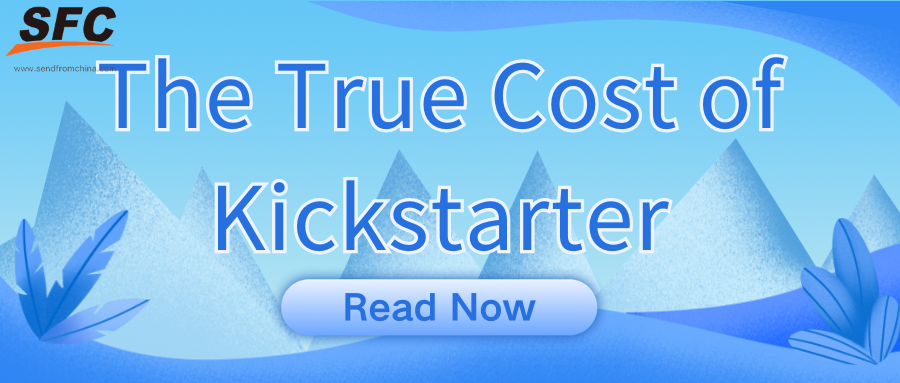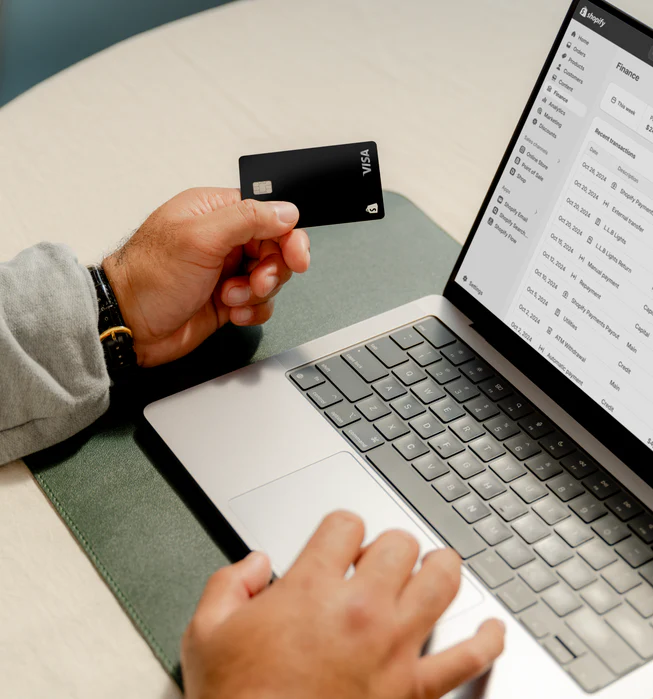Table of Contents
Get Custom eCommerce Fulfillment Service
Book a Meeting
The True Cost of Kickstarter: 2025 Fees, Hidden Expenses, and Budget Tips
Time: Jul 12,2025 Author: SFC Source: www.sendfromchina.com
Launching a Kickstarter campaign in 2025 offers creators a powerful avenue to fund their projects, but it's essential to understand the associated costs to ensure success. While Kickstarter's fee structure is transparent, encompassing a 5% platform fee and payment processing fees ranging from 3% to 5% per pledge, there are additional expenses to consider, which can include costs for marketing, shipping, taxes, and unforeseen challenges that may arise during the campaign. By comprehensively understanding these fees and planning accordingly, creators can set realistic funding goals and navigate the crowdfunding landscape effectively.
1. Kickstarter Fees Breakdown
Understanding Kickstarter's fee structure is crucial for accurately budgeting your crowdfunding campaign. As of 2025, the platform maintains a transparent fee system, comprising two primary components: the platform fee and payment processing fees.Kickstarter Platform Fees
Kickstarter charges a flat 5% platform fee on the total funds raised for successfully funded projects. The fee supports the platform's operations, including hosting, customer support, and development of new features. It's important to note that if your project does not reach its funding goal, no fees are charged.Example
If your campaign raises $50,000, the platform fee would be:
$50,000 × 5% = $2,500
Kickstarter Payment Processing Fees
In addition to the platform fee, Kickstarter utilizes Stripe for payment processing, which incurs additional fees. These fees are deducted from the total funds raised and vary based on the pledge amount:- Pledges over $10: 3% + $0.20 per pledge
- Pledges under $10 (micro-pledges): 5% + $0.05 per pledge
Example: For 200 pledges over $10 totalling $20,000
Percentage fee: $20,000 × 3% = $600
Fixed fee: 200 × $0.20 = $40
Total processing fees: $640
Example: For 100 micro-pledges under $10 totalling $800
Percentage fee: $800 × 5% = $40
Fixed fee: 100 × $0.05 = $5
Total processing fees: $45
2. How to Calculate Kickstarter Charges Totally
Kickstarter's fee structure comprises two primary components: the platform fee and payment processing fees.
- Calculate Platform Fee: Total Funds Raised × 5%
- Calculate Payment Processing Fees: (Applicable Percentage × Total Funds) + (Fixed Fee × Number of Pledges)
Total Fees = Platform Fee + Payment Processing Fees
3. Hidden Costs of Kickstarter Campaigns
While the platform and payment processing fees are well-known, several additional expenses can impact your campaign's budget. Understanding these hidden costs is crucial for accurate financial planning and successful project fulfillment.
Dropped Pledge
After a campaign concludes, some backers' payments may fail to process due to expired credit cards or insufficient funds. These dropped pledges can reduce your total funds raised, affecting your ability to fulfill rewards. It's advisable to anticipate a drop-off rate of approximately 3-5% and adjust your funding goals accordingly. Kickstarter provides tools to help manage and communicate with backers regarding payment issues.Tax and Regulatory Fees
Funds raised through Kickstarter are generally considered taxable income. Depending on your location and the nature of your rewards, you may be responsible for collecting and remitting sales tax or VAT. Kickstarter can assist in calculating and collecting these taxes, but it's essential to consult with a tax professional to ensure compliance with local regulations.Shipping internationally introduces additional challenges, especially when dealing with physical rewards. You may be responsible for sales tax or VAT, particularly in the EU, where VAT compliance is strictly enforced.
Shipping and Fulfillment Costs
Shipping physical rewards can be a significant expense, especially for international backers. Costs can fluctuate due to tariffs, customs duties, and shipping rates. Kickstarter's Tariff Manager helps creators manage and offset unexpected U.S. import costs. Additionally, partnering with professional third-party logistics fulfillment providers can streamline the process but may add to your overall expenses.Marketing and Promotion
Investing in marketing is essential to reach potential backers. Costs may include social media advertising, email campaigns, and promotional materials. These expenses should be factored into your overall budget. Effective marketing strategies can significantly impact the success of your campaign.Tools and Software
Utilizing tools for project management, customer relationship management (CRM), and design software can enhance your campaign but also add to your expenses. Evaluate the necessity and cost of these tools in your planning. Some commonly used tools include Trello for project management, Mailchimp for email marketing, and Adobe Creative Suite for design needs.4. How to Reduce Your Kickstarter Fees
While Kickstarter's platform and payment processing fees are standard, there are strategic approaches to minimize their impact and maximize the funds available for your project.
Optimize Reward Tiers to Minimize Micro-Pledge Fees
Kickstarter charges higher processing fees for pledges under $10—specifically, 5% plus $0.05 per pledge. To reduce these fees:- Set Minimum Pledge Amounts Above $10: Encourage backers to pledge at least $10 by offering valuable rewards at this level.
- Bundle Lower-Tier Rewards: Combine smaller rewards into bundles that meet or exceed the $10 threshold, providing more value to backers while reducing per-pledge fees.
Encourage Higher Pledge Amounts
Increasing the average pledge amount can reduce the overall percentage lost to fees:- Offer Exclusive High-Value Rewards: Provide limited-edition items or experiences for higher pledge tiers to incentivize larger contributions.
- Implement Early-Bird Specials: Offer discounted rates for early backers at higher tiers to boost initial funding momentum.
Utilize Kickstarter's Funding Calculator
Kickstarter provides a Funding Calculator to help creators set realistic funding goals by accounting for fees and taxes:- Access the Calculator: Navigate to the Funding tab in your project editor and use the calculator to input your estimated budget and tax percentage.
- Adjust Funding Goals Accordingly: The calculator will suggest a funding goal that incorporates platform fees, payment processing fees, and estimated taxes, ensuring you raise sufficient funds to cover all expenses.
Plan for Taxes and Shipping Costs
Unexpected taxes and shipping costs can erode your budget:- Use Kickstarter's Pledge Manager: The tool allows you to collect exact shipping costs and applicable taxes after the campaign ends, ensuring accurate budgeting.
- Research International Shipping Regulations: Understand VAT and customs duties for international backers to avoid unforeseen expenses.
Leverage Kickstarter's Tariff Manager
To manage additional costs due to tariffs:- Apply Surcharges Transparently: Use the Tariff Manager to add necessary surcharges for backers in affected regions, clearly communicating the reasons for these charges.
- Seek Approval for Surcharges: Submit requests through Kickstarter to apply per-item surcharges, ensuring compliance and transparency.
Streamline Fulfillment Processes
Efficient fulfillment can reduce costs:- Partner with Reliable Fulfillment Services: Choose fulfillment partners with transparent pricing and proven track records to avoid unexpected fees.
- Consolidate Shipments: Group shipments when possible to reduce per-unit shipping costs.
Monitor and Adjust Marketing Spend
Marketing is essential but can become costly:- Set a Marketing Budget: Allocate a specific percentage of your funding goal to marketing efforts to prevent overspending.
- Track ROI: Use analytics tools to monitor the effectiveness of marketing campaigns and adjust strategies as needed to ensure cost-effectiveness.
5. Timeline for Receiving Funds
Post-campaign cash flow is critical:- Days 1–14: Kickstarter processes payments (handles failed cards).
- Days 15–19: Funds (minus fees) transfer to your bank.
- Day 20+: Manufacturing begins. Note: Delays occur if >5% of payments fail.
Pro Tip: Line up manufacturers before launch to avoid idle time.
6. Conclusion
Understanding Kickstarter's fee structure and associated hidden costs is vital for planning a successful campaign. By accurately estimating expenses, utilizing available tools, and implementing cost-saving strategies, creators can effectively manage their budgets and maximize the funds available for their projects.7. FAQs
Q1: What percentage does Kickstarter take from a successful campaign?
A1: Kickstarter charges a 5% platform fee, plus payment processing fees of 3% to 5% per pledge.Q2: Are there fees if my campaign doesn't reach its funding goal?
A2: No, if your campaign isn't successfully funded, Kickstarter does not charge any fees.Q3: How can I estimate the total fees for my campaign?
A3: Use online Kickstarter fee calculators to input your funding goal and estimate total fees.Q4: What are micro-pledge fees?
A4: For pledges under $10, payment processing fees are higher—5% plus $0.05 per pledge.Q5: How long does it take to receive funds after a successful campaign?
A5: Funds are typically received within 3 to 14 business days after the 14-day pledge collection period. Post Views:13386
Post Views:13386
Copyright statement: The copyright of this article belongs to the original author. Please indicate the source for reprinting.
Previous Post
Cloud WMS Explained: What Is Cloud‑Based Warehouse Management Software?
Next Post
TAGS
Hot Research
Recent News
- Third Party Logistics Definition, Process, and Advantages
- What Is Ecommerce Fulfillment? The Definition, Process, and Benefits
- Where Does Shein Ship From
- Why DHL Express Is the Best Courier for Fast International Shipping in 2026
- FedEx International Economy Shipping Guide: Rates, Speed, and Business Benefits
Get Custom eCommerce Fulfillment Service
Book a Meeting
Get a Custom China Fulfillment Solution with FREE Storage for 30 Days
 Want to know about our services, fees or receive a custom quote?
Want to know about our services, fees or receive a custom quote?
 Please fill out the form on the right and we will get back to you within a business day.
Please fill out the form on the right and we will get back to you within a business day.
 The more information you provide, the better our initial response
will be.
The more information you provide, the better our initial response
will be.





 TAGS:
TAGS: